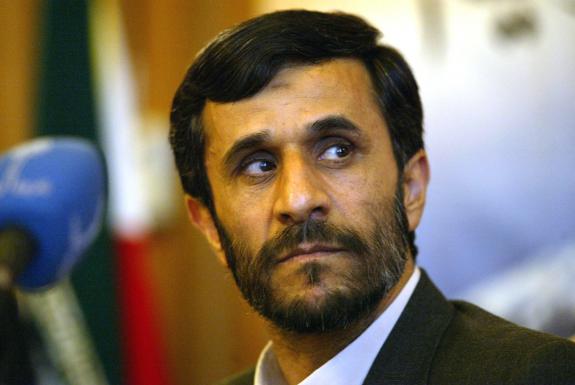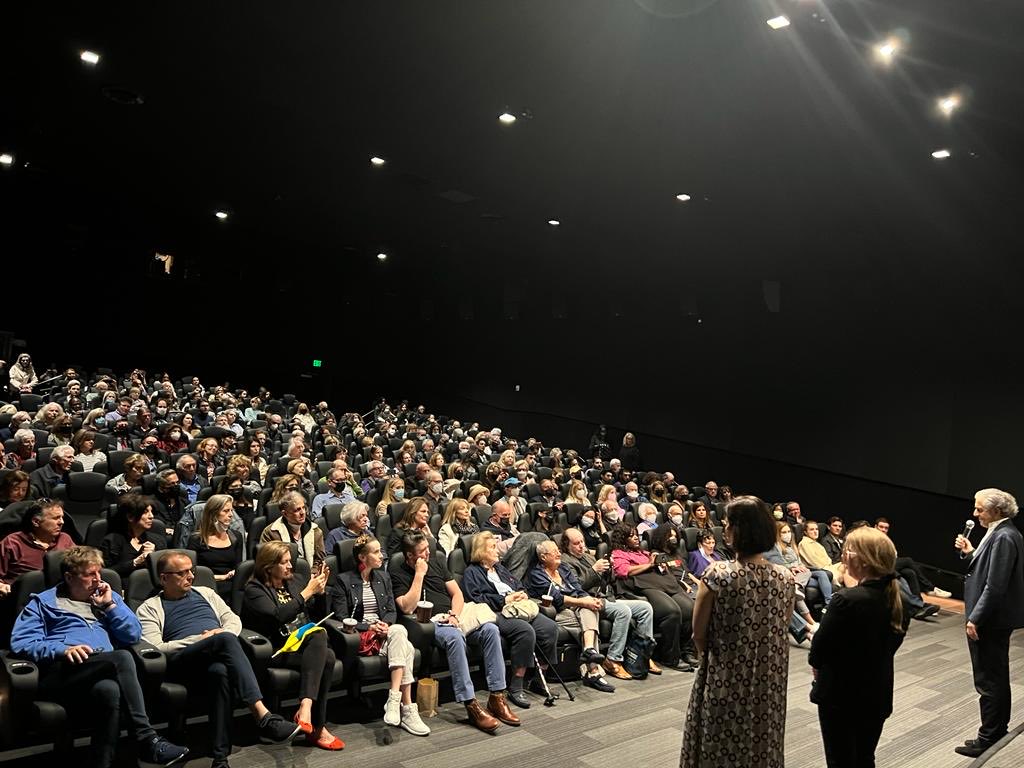When the wise man points to the moon, the imbecile looks at the finger.
Rarely has the Chinese adage seemed so clear to me as it does today.
For, of course, all eyes are riveted on the downward slide in the president’s popularity.
The entire political class has pounced, as one man, on the episodes leading up to McChrystal’s sacking and their consequences.
And yet, while all this has been going on, an event has gone completely unnoticed, a huge, colossal event, one which, in the long run, can redraft the map of the planet, and one which this shadow theater nonetheless conceals from view.
This major event absent from all the main radars, this geopolitical reversal that has not earned a thousandth of the media coverage devoted to Hillary Clinton’s changing moods, is the United Arab Emirates’s decision to inspect ships more or less directly linked to Iran or to trade with Iran arriving in their territorial waters and to freeze 41 bank accounts belonging to Iranian entities that may serve as a screen for contraband operations to further Tehran’s nuclear program. In other words, the UAE has chosen to side with the camp of those who apply to the letter the new United Nations resolution of June 9th that provides for further intensification of sanctions against Iran.
This event occurs a few days after Hamad al-Kaabi, permanent representative of The Emirates to the IAEA, declared, at the closure of the annual meeting of the Global Initiative to CombatNuclear Terrorism at Abu Dhabi, that within the past few weeks, Emirates police have already inspected several dozen ships containing sensitive materials.
It follows Georges Malbrunot’s article in June 26th’s French daily Le Figaro, revealing how the strange circumstances of the Mossad’s assassination of Mahmud al-Mabhuh in Dubai last January may well have been another red herring, another tree for which we were unable to see the forest, and another version of the apologue of the wise man, the imbecile, and the moon. For during this time, The Emirates were working closely with Israel to secure their borders, protect their oil wells, and prepare themselves for eventual destabilizing operations on the part of Iran!
It comes on the heels of still another news item that appeared, this time, in the June 13th Times of London and has since been denied, though laconically, by Riyad: Saudi Arabia has decided to open its air space to Israeli planes. No details were provided, but one cannot help but think of a hypothetical surprise attack conducted by Tsahal against Ahmadinejad’s nuclear sites.
All of this constitutes a major event for at least three reasons.
First of all, because it reminds those who refuse to observe the fact that Islam is not a bloc. Islam of peace exists, vs Islam of war; moderate Islam vs fanatical Islam; and, of course, in this case, Sunni Islam vs Shiite Islamor, to be exact, vs this heresy of Shi’ism that is the apocalyptic Islam of the loonies and the gangsters who, a year ago, stole their vote from the Iranians.
And then, it demonstrates as well that the front of refusal against the Iranian regime and its plans for total war is growing larger and taking shape and consistency. Obviously, the Israeli democracy and the Saudi autocracy have little in common; it is undeniable that nothing, no political or geopolitical gesture, no great rapprochement with whatever State can make one forget, for example, the massive violations of human rights, and of women’s rights, on the part of Riyad. Nonetheless, the perspective of seeing Iran possess weapons of mass destruction represents a threat that cannot possibly be regarded as comparable to any human rights violation whatsoever, and to know that an increasing number of countries of the region are beginning to realize the fact is, in itself, an important piece of news.
And I would add that, concerning the 41 bank accounts identified and frozen by the United Nations resolution, we should know that, 1) as Ambassador al-Kaabi himself admitted, the port of Dubai was in the process of becoming the hub of the very worst trafficking in nuclear materials; 2) even apart from nuclear materials, The Emirates are the third destination, after China and Iraq, of Iranian exports, which have tripled in the past four years; and, 3) of the 41 accounts targeted, nearly half are the property of the Islamic Republic itself, or of the corps of the Guardians of the Revolution.
We might as well say that The Emirates’s decision is truly a blow to the regime. Better still, it’s a cold shower of truth destined for the suckers who believed in an alliance that is against nature, on the pretext of a « union sacrée » of all the Muslims of the region against the « Zionist enemy ».
And the fact that, for the first time, an Arab country took this step, the fact that it said no to the Iranians’ attempted holdup, thus foiling the manœuvre of which Hamas and Hezbollah were the vanguard but whose ultimate goal was to set the region ablaze, constitutes not only a gesture of survival but proof of maturity and a welcome sign of clarification.
If this decision is maintained, nothing will ever be the same again. And for Ahmadinejad, the countdown will have begun.
(Translation Janet Lizop)








Courage, tenez ferme! Le monde compte sur vous. Mais si je puis me permettre un bémol moderato, au sujet d’un double dièse minaccioso dont la persistance pourrait entraîner une profonde dissonance… Le centre de détention de Kahrizak me paraît ressembler davantage à un goulag qu’à un camp de la mort. Les mots ont une mémoire. Ne contribuons pas en retournant contre lui les perversions sémantiques dont se pourlèche Ahmadinejad, à les amnésier.
18 Tir 1389: le mouvement étudiant iranien, l’espoir de tout un peuple
Un an s’est écoulé depuis le 18 Tir 1388 (9 juillet 2009). Le jour où 10 ans après les exactions commises par les agents du régime en 1999 ayant conduit à plusieurs jours d’émeutes à Téhéran, de très nombreux manifestants voulaient à nouveau défier le pouvoir et descendre dans la rue. Les campus étaient en ébullition. Un mois à peine après la tenue de l’élection frauduleuse du 12 juin 2009, les manifestants voulaient une nouvelle fois célébrer la contribution majeure du mouvement étudiant à la lutte pour l’avènement de la démocratie en Iran. Une fois de plus, les étudiants ont été aux avant-postes du mouvement de contestation. Comme leurs glorieux aînés qui, le 16 Azar 1332 (7 décembre 1953), quelques mois à peine après un autre coup d’Etat, celui du 19 Août 1953, avaient déjà marqué à jamais l’Histoire du mouvement étudiant iranien. Autres temps, autres dictateurs, mais même détermination pour les étudiants assoiffés de liberté et de justice qui se sentaient déjà investis d’une mission d’éclaireurs et de leaders d’aspirations légitimes de tout un peuple.
En ce 18 Tir 1388, le régime a alors décidé de déployer toute son armada répressive pour contrôler la rue et surtout les campus universitaires. Les manifestants de tous âges qui voulaient tout simplement honorer les étudiants et la jeunesse ont été confrontés à l’horreur et à des actes de violence d’une intensité inouïe. Ce jour là, d’après les propos de l’ancien Procureur Général de Téhéran, Saïd Mortazavi, l’ampleur de la vague d’arrestation était telle que la prison d’Evin ne pouvait plus contenir l’afflux impressionnant de prisonniers. Les autorités ont été obligées de transférer des prisonniers en partie au centre de détention de Kahrizak. Amir Javadifar, Mohsen Rouholamini, Mohammad Kamrani, Ramin Aghazadeh Ghahremani et Abbas Nejati Kargar allaient trouver la mort des suites des actes de torture infligés dans ce camp de la mort. De très nombreux manifestants détenus à Kahrizak ont connu l’horreur (le régime parle de 98 prisonniers de Kahrizak ayant porté plainte).
Ce qui s’est passé il y a un an jour pour jour a dépassé très largement tout ce que les iraniens avaient imaginé en degré de violence et d’horreur. Ce jour là, il est devenu clair que le régime devait mater à tout prix le mouvement étudiant dans le sang pour éviter sa chute. Les principaux leaders étudiants (Majid Tavakoli, Bahareh Hedayat, Milad Asadi et tant d’autres) allaient être arrêtés dans les semaines et les mois qui ont suivi. Aujourd’hui encore, ils subissent les pires tortures et intimidations, comme si cela allait normaliser la situation ou du moins permettre au régime de gagner du temps pour laisser passer l’orage.
Depuis un an, les universités, en raison de leur formidable dissémination géographique (les branches de l’université Azad présentes dans quasiment toutes les villes) et du creuset d’échanges culturels et sociétaux qu’elles représentent, sont devenues le véritable front de contestation contre le régime. Malgré la chape de plomb, le régime sait que l’Université n’est pas morte. Le régime sait pertinemment qu’il peut être débordé à tout moment par une nouvelle vague de contestation catalysée et portée par le mouvement étudiant. Il craint plus que toute autre chose la vigueur et la spontanéité de ce mouvement, sa capacité à animer les forces démocratiques et à incarner l’espoir.
http://iranlibredemocratique.blogspot.com/2010/07/18-tir-1389-le-mouvement-etudiant.html